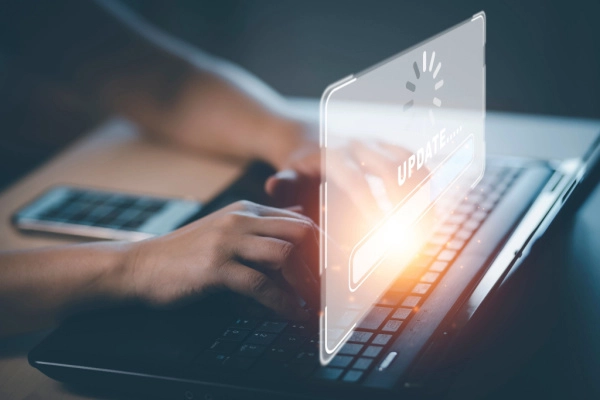Tech Health Checks – What You Need to Know
As generative artificial intelligence (AI) and tech transformation rapidly reshape our cultural and professional landscape, organizations must...

In an ideal world, new systems are simple to use and implement instantly across the enterprise. In the real world, not so much. The sheer size of new system rollouts requires training, process changes, occasionally new hardware, and the inevitable spike in support calls. More organic, phased rollout approaches are much more common.
GL Coding Use Case
One large distributor looked to save costs by incorporating automation into a labor-intensive invoice processing and vendor payment system. Originally, it was a system that, like the company, grew dynamically and organically as the enterprise expanded through acquisition. Branch offices across North America receive invoices and send them to a central organization for payment.
While the company succeeded in centralizing payment processing, expense management is still local to the branch. Only local skill and knowledge could decide where a particular expense should land on the profit and loss report. You may recognize the process I am talking about here is General Ledger or GL coding. Each invoice, and sometimes each line on an invoice, associates with a specific GL account code. Modern systems automatically code some types of invoices, but there will always be exceptions.
A high percentage of enterprise invoices arrive at branch locations. The current process for payment submission, which the automation had to integrate with, involves branch office staff attaching one or more invoices to an email and supplying the desired GL coding somewhere in the subject line or body of the message. As you might imagine, the unstructured nature of emails allows branch staff to use various unique and unusual ways of communicating account numbers.
To add to the challenge, changes in accounting systems driven by company acquisitions mean GL account numbers change. Processes can use older GL codes to keep things simple for staff new to the organization and the systems. A series of cross-reference tables translate the obsoleting codes to current values until branch staff acclimates to different systems.
Prior to automation, staff receiving the emails saved off the invoice files; uploaded them to the document repository, and manually entered invoice details, including the GL coding intent of the sending branch. GL codes were not always correct, and the system had limited facilities for checking code validity. Needless to say, the process was labor-intensive and error-prone.
Once the enterprise decided to automate using Kofax TotalAgility®, the question arose of what a system could do with all that process complexity.
The first challenge was to extract a sender’s GL coding intent from the email message. Using pattern recognition and natural language processing techniques, Kofax TransformationTM hunts down GL codes anywhere in the message, populates them into the proper process fields, and checks real-time validity against the current chart of accounts.
Central site staff does a review and approves all automation results. An intelligent GL coding user experience supplies lists of proper codes when changes are necessary. Other features allow the assignment of a selected code to all the invoices in the email. Occasionally individual invoices require unique codes. A guided user experience simplifies that task.
When GL coding completes, automation processes again kick in to ensure that account numbers are current, and if they are not, they apply corrected values using translation tables. A mechanism keeps track of those changes and generates notifications back to the sending user telling them which GL code to use in future submissions.
In Conclusion
Enterprise processes develop organically over time. They must—business must get done. It would be ideal if a business analyst were there to design and developers were there any time a process must change, but they cannot be. So less than ideal processes, often with excessive costs, develop and become deeply embedded in enterprise culture. Automation systems can adapt to those systems, lower costs, improve staff experiences, and simplify the transition away from deeply ingrained processes.
Would you like to learn more about simplifying your GL Coding? Contact Genus at Sales@genustechnologies.com.
For more insightful articles, subscribe to Genus Insights!

As generative artificial intelligence (AI) and tech transformation rapidly reshape our cultural and professional landscape, organizations must...

Batch Class Import Have you ever configured a batch class to import electronic documents (i.e., eDocuments in Kofax) and noticed that when those...

With the latest releases of Kofax TotalAgility® and Kofax Capture, Kofax is including Kofax Transformation (KT) 7.0. One of the key changes with that...